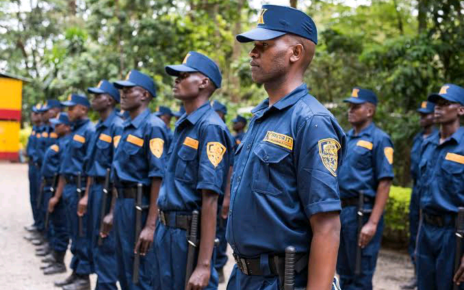Encountering a soldier often leads to mentions of various military ranks, which might not be immediately familiar to everyone. In Kenya, the armed forces organize ranks into two main tiers: non-commissioned officers and commissioned officers.
Non-commissioned officers represent the entry level of military rank. Their advancement is based on merit and experience within enlisted ranks, rather than being appointed by presidential decree.
Commissioned officers, conversely, hold the highest positions in the military. Their appointments and promotions are authorized by the President.
In the Kenyan armed forces, commissioned ranks are structured as follows:
General:
This is the pinnacle rank achievable within the armed forces, with only one officer holding the position at any given time. The General serves as the Chief of the Defence Forces (CDF). Advancements within this rank are influenced by factors such as age, experience, merit, and academic qualifications, as outlined in the Tonje Law.
The Tonje Law, named after retired military chief Daudi Tonje, stipulates rotational promotions among the Army, Air Force, and Navy within this rank category. For instance, following the tenure of General Robert Kariuki Kibochi (Army), the late Francis Ogolla (Air Force) succeeded, ensuring the next CDF will be drawn from the Navy.
Lieutenant General:
These officers are directly accountable to the Commander-in-Chief of the Armed Forces and the CDF. They often hold positions as Vice Chiefs of the Defence Forces or lead the National Defence College. Referred to as three-star generals, they oversee entire divisions of soldiers.
Major General:
Also known as two-star generals, Major Generals are responsible for military planning and mission coordination, typically overseeing division-sized units of approximately 10,000 to 15,000 soldiers.
Brigadier:
Brigadiers lead brigades consisting of several thousand soldiers. Previously known as brigadier-generals, this rank is the lowest within the general officer category.
Colonel:
Colonels oversee the army’s administrative functions, typically having received training at the Defense Staff College.
Lieutenant-Colonel:
Acting as commanding officers, lieutenant colonels lead units of around 650 soldiers, ensuring efficient and disciplined operations.
Major:
In charge of sub-units of up to 120 officers, Majors oversee equipment, training, and operations, requiring at least eight years of service.
Captain:
Captains command companies consisting of 50 to 150 soldiers and may serve as second-in-command.
Lieutenants:
Leading platoons or troops of 25 to 30 soldiers, Lieutenants play crucial roles in operational leadership.
Second-Lieutenant:
This is the entry-level commissioned officer rank, responsible for commanding a platoon with limited responsibilities compared to Lieutenants.
General (Rtd) Daudi Tonje, a revered figure in the Kenyan military, spearheaded numerous reforms during his tenure. Notable achievements include integrating women into mainstream military roles, establishing the Defence Staff College, and implementing the Defence Forces Medical Insurance Scheme. Additionally, General Tonje introduced term limits for military officers and modernized payment systems, eliminating pay parades in favor of direct bank transfers.
Enlisted in 1962, Gen (Rtd) Daudi Tonje underwent cadet training, becoming the first direct-entry African cadet. His career saw him posted to the 11th KAR battalion before transitioning to a peaceful retirement as a goat farmer in Baringo County.



